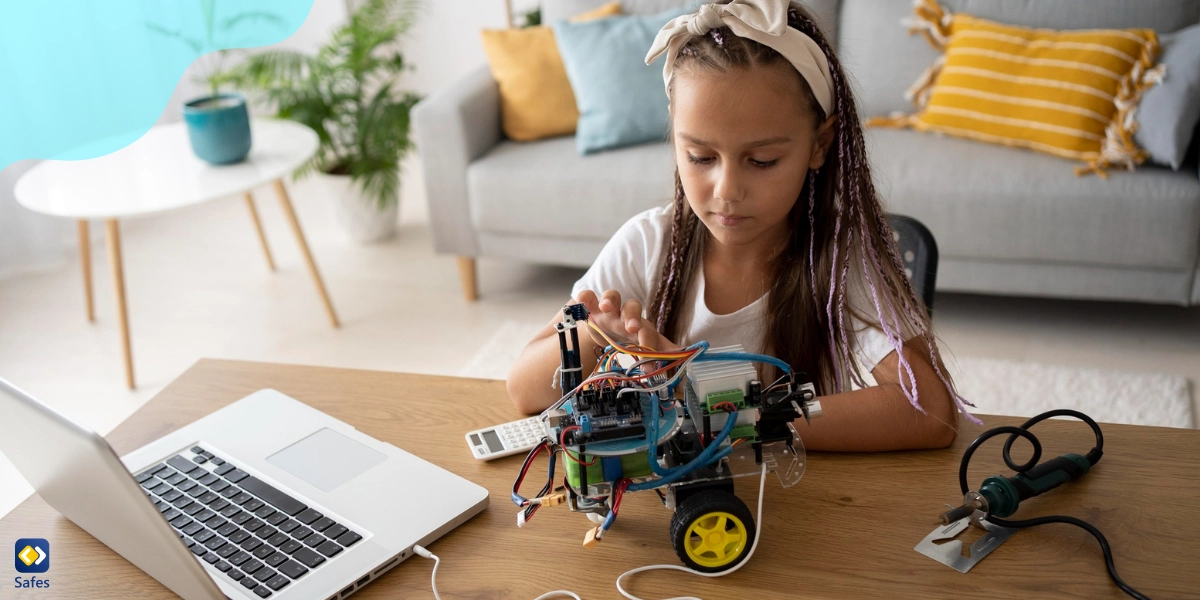Smart toys, equipped with Internet of Things (IoT) technology, offer innovative features that enhance play experiences. However, ensuring child safety remains paramount in their design, usage, and regulation. This comprehensive guide explores the intersection of IoT and child safety in smart toys, fancy dress concerns, benefits, and best practices for parents and manufacturers alike.
Understanding IoT in Smart Toys
Definition of IoT
- IoT Integration: Smart toys connect to the internet, enabling interactive features such as voice commands, remote control, and data transmission.
- Sensors and Connectivity: Embedded sensors collect data for interactive play and educational purposes, often synchronized with mobile apps or cloud services.
Features and Benefits
- Interactive Play: Engages children through voice recognition, augmented reality (AR), and personalized responses.
- Educational Tools: Enhances learning with interactive lessons, language skills, and problem-solving activities tailored to individual learning styles.
Importance of Child Safety
Risks and Concerns
- Privacy Issues: Data collection from smart toys raises concerns about unauthorized access to personal information and online safety.
- Physical Safety: Potential hazards include small parts, choking risks, and toy malfunctions due to electronic components.
Regulatory Standards
- Compliance: Manufacturers must adhere to strict safety regulations, including ASTM F963 and CPSIA standards, ensuring product safety and quality assurance.
- Privacy Laws: GDPR and COPPA regulations protect children’s online privacy and data security, imposing restrictions on data collection and sharing practices.
Best Practices for Parents
Research and Selection
- Reviews and Ratings: Consult reputable sources for unbiased reviews and safety ratings before purchasing smart toys.
- Age Appropriateness: Select toys suitable for your child’s age and developmental stage, considering physical and cognitive abilities.
Privacy Settings and Monitoring
- Parental Controls: Activate privacy settings, restrict online interactions, and monitor usage to safeguard personal data.
- Consent and Permissions: Understand data collection practices and obtain consent before sharing personal information or enabling location services.
Manufacturer Responsibilities
Design and Development
- Safety by Design: Incorporate robust safety features, including durable materials, secure battery compartments, and age-appropriate functionalities.
- Testing and Certification: Conduct rigorous testing to meet safety standards and certifications, ensuring compliance with regulatory requirements.
Transparency and Disclosure
- Data Handling: Transparently disclose data collection practices, encryption methods, and storage protocols to reassure parents and users.
- Security Updates: Provide timely security patches and firmware updates to address vulnerabilities and enhance toy security over time.
Educating Children About Online Safety
Digital Literacy
- Safe Online Practices: Teach children about internet safety, including identifying phishing attempts, setting strong passwords, and avoiding sharing personal information.
- Critical Thinking: Foster critical thinking skills to evaluate online content, recognize potential risks, and make informed decisions.
Balance and Supervision
- Screen Time Management: Establish screen time limits and encourage balanced play activities that promote physical, social, and cognitive development.
- Parental Engagement: Engage in interactive play with children, discussing digital experiences and addressing any concerns about smart toy usage.
Addressing Emerging Technologies
AI and Machine Learning
- Personalized Experiences: AI algorithms adapt toy interactions based on user behavior and preferences, enhancing engagement and learning outcomes.
- Ethical Considerations: Ensure AI-driven toys prioritize child safety, uphold privacy standards, and promote positive developmental experiences.
Future Trends and Innovations
- Voice Command Integration: Advances in natural language processing enable seamless interaction and personalized responses in smart toys.
- IoT Ecosystems: Integration with smart home devices and wearables creates interconnected play experiences, expanding learning opportunities and parental controls.
Conclusion: Navigating the IoT Landscape in Smart Toys
Smart toys represent a dynamic intersection of technology and play, offering immersive experiences that enrich childhood development. However, ensuring child safety in IoT-driven toys requires collaboration among parents, manufacturers, and regulatory bodies. By prioritizing privacy, adhering to safety standards, and promoting digital literacy, stakeholders can harness the benefits of smart toys while safeguarding children’s well-being in an evolving digital landscape. Stay informed, engaged, and proactive to foster safe and enjoyable smart toy experiences for children worldwide.
